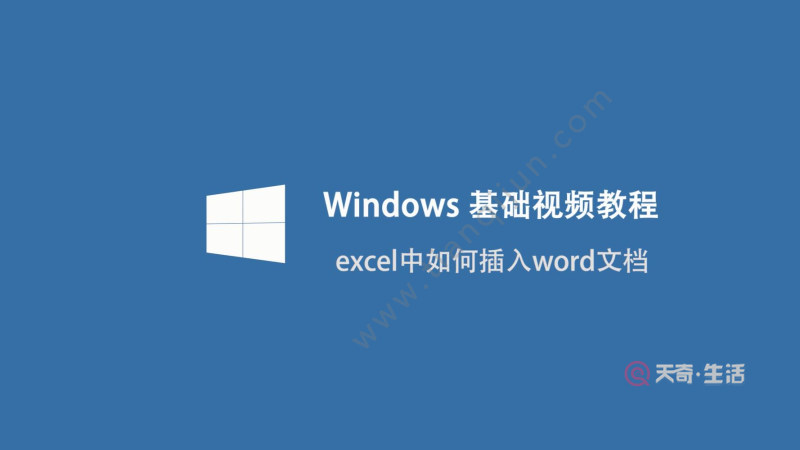书史足自悦,安用勤与劬。这篇文章主要讲述OpenHarmony 源码解析之账号子系统相关的知识,希望能为你提供帮助。
作者:严明舟
1 简介在标准系统上,账号子系统主要提供分布式帐号登录状态管理能力,支持在端侧对接厂商云帐号应用,提供云帐号登录状态查询和更新的管理能力
1.1 OpenHarmony架构图

文章图片
1.2 账号子系统架构图

文章图片
1.3 账号子系统目录结构
/base/account/os_account
├── frameworks
│├── appaccount# 应用账号kit代码
│├── ohosaccount# 云账号kit代码
│├── common# 共通基础代码
││├── account_error# 错误码
││├── database# 数据库基础代码
││├── log# 打印日志代码
││└── perf_stat# 性能统计
├── interfaces
│├── innerkits
││├── appaccount# 应用账号内部接口
││├── ohosaccount# 云账号内部接口
│└── kits
│└── napi
│├── appaccount# 应用账号对外接口
│└── distributedaccount# 分布式账号对外接口
├── sa_profile# 帐号SA配置文件定义目录
└── services
└── accountmgr# 帐号管理服务2 账号管理服务的启动 2.1 rc启动服务
```c++
#base\\account\\os_account\\services\\accountmgr\\accountmgr.rc
on post-fs-data
start accountmgr
service accountmgr /system/bin/sa_main /system/profile/accountmgr.xml
class z_core
user system
group system shell
seclabel u:r:accountmgr:s0
writepid /dev/cpuset/foreground/tasks /dev/stune/foreground/tasks /dev/blkio/foreground/tasks
#### 2.1.1 rc文件结构解析rc文件是以模块为单位的,模块分为3种类型:**on**、**service**、**import**- **import:** 导入其它的`rc`文件
- **on:** 执行`chown、mkdir、write、export、symlink`等简单的shell指令,如:```c++
on post-fs-data
start accountmgrpost-fs-data将一个section里的所有命令加入到一个执行队列,在未来的某个时候会顺序执行队列里的命令- service: 执行可执行程序,如:
service accountmgr /system/bin/sa_main /system/profile/accountmgr.xml
class z_core
user system
group system shell
seclabel u:r:accountmgr:s0
writepid /dev/cpuset/foreground/tasks /dev/stune/foreground/tasks /dev/blkio/foreground/tasks
`accountmgr`为可执行程序名`/system/bin/sa_main /system/profile/accountmgr.xml`为可执行文件的路径`class、user、group、seclabel、writepid`这些关键字所对应的行是用来描述`service`一些特点,不同的`service`有着不同的特点**service**什么时候被执行?在某个**on**模块的指令里会存在`“class_start”`,例如:```c++
class_start core
class_start main
on nonencrypted
class_start late_start当执行到这里是service模块就会被调用
2.2 AccountMgrService的启动流程

文章图片
2.2.1 AccountMgrService通过OnStart调用Init
AccountMgrService继承自SystemAbility,当应用启动时首先应用程序框架会调用AccountMgrService的生命周期函数OnStart();OnStart()首先判断服务运行状态是否已经开启,如果没有开启,则调用Init()进行初始化操作- 初始化操作完成并返回
true给OnStart()后,服务运行状态则更新为开启状态
//base\\account\\os_account\\services\\accountmgr\\src\\account_mgrservice.cpp
void AccountMgrService::OnStart()
//判断服务运行状态是否已经开启
if (state == ServiceRunningState::STATE_RUNNING)
ACCOUNT_LOGI(" AccountMgrService has already started." );
return;
PerfStat::GetInstance().SetInstanceStartTime(GetTickCount());
ACCOUNT_LOGI("start is triggered");
//如果服务运行状态没有开启,则调用Init()进行初始化操作
if (!Init())
ACCOUNT_LOGE("failed to init AccountMgrService");
return;
//初始化操作完成并返回true给OnStart()后,服务运行状态则更新为开启状态
state_ = ServiceRunningState::STATE_RUNNING;
ACCOUNT_LOGI("AccountMgrService::OnStart start service success.");
#### 2.2.2 AccountMgrService的Init()实现- `Init()`被调用后,依然要先判断服务运行状态是否已经开启
- 随后,检查`DEVICE_OWNER_DIR`是否存在,如果不存在就强制创建
- 如果服务还没有被注册,则调用`Publish()`来注册服务,`Publish()`执行成功后,标记服务已经被注册
- 创建`OhosAccountManager`对象,并调用它的`OnInitialize`方法```c++
//base\\account\\os_account\\services\\accountmgr\\src\\account_mgr_service.cpp
bool AccountMgrService::Init()//判断服务运行状态是否已经开启
if (state_ == ServiceRunningState::STATE_RUNNING)
ACCOUNT_LOGW("Service is already running!");
return false;
//检查DEVICE_OWNER_DIR是否存在,如果不存在就强制创建
if (!OHOS::FileExists(DEVICE_OWNER_DIR))
ACCOUNT_LOGI("Device owner dir not exist, create!");
if (!OHOS::ForceCreateDirectory(DEVICE_OWNER_DIR))
ACCOUNT_LOGW("Create device owner dir failure!");
bool ret = false;
//如果服务还没有被注册,则调用Publish()来注册服务,Publish()执行成功后,标记服务已经被注册
if (!registerToService_)
ret = Publish(&
DelayedRefSingleton<
AccountMgrService>
::GetInstance());
if (!ret)
HiviewDFX::HiSysEvent::Write(HiviewDFX::HiSysEvent::Domain::ACCOUNT, "AccountServiceStartFailed",
HiviewDFX::HiSysEvent::EventType::FAULT, "ERROR_TYPE", ERR_ACCOUNT_MGR_ADD_TO_SA_ERROR);
ACCOUNT_LOGE("AccountMgrService::Init Publish failed!");
return false;
registerToService_ = true;
PerfStat::GetInstance().SetInstanceInitTime(GetTickCount());
//创建OhosAccountManager对象
ohosAccountMgr_ = std::make_shared<
OhosAccountManager>
();
//调用OhosAccountManager的OnInitialize方法
ret = ohosAccountMgr_->
OnInitialize();
if (!ret)
ACCOUNT_LOGE("Ohos account manager initialize failed");
HiviewDFX::HiSysEvent::Write(HiviewDFX::HiSysEvent::Domain::ACCOUNT, "AccountServiceStartFailed",
HiviewDFX::HiSysEvent::EventType::FAULT, "ERROR_TYPE", ret);
return ret;
dumpHelper_ = std::make_unique<
AccountDumpHelper>
(ohosAccountMgr_);
IAccountContext::SetInstance(this);
ACCOUNT_LOGI("init end success");
return true;
2.2.3 OhosAccountManager的初始化
OhosAccountManager::OnInitialize首先调用BuildEventsMapper()进行事件映射,查看BuildEventsMapper()实现可发现,写死的事件有账号登入、登出、注销和Token失效,并与对应的方法绑定- 组织账号配置文件路径,作为参数创建
OhosAccountDataDeal对象,并调用它的Init方法,查看Init()实现可发现,Init()读取账号配置文件并保存到jsonData_中 - 调用
AccountInfoFromJson()获取账号信息并保存到currentAccount_中
//base\\account\\os_account\\services\\accountmgr\\src\\ohos_accountmanager.cpp
bool OhosAccountManager::OnInitialize()
accountState = std::make_unique< AccountStateMachine> ();
//事件映射
BuildEventsMapper();
//组织账号配置文件路径
std::int32_t userId = GetUserId();
std::string filePath;
filePath.append(ACCOUNT_CFG_DIR_ROOT_PATH).append(std::to_string(userId)).append(ACCOUNT_CFG_FILE_NAME);
//创建OhosAccountDataDeal对象
dataDealer_ = std::make_unique<
OhosAccountDataDeal>
(filePath);
std::int32_t tryTimes = 0;
while (tryTimes <
MAX_RETRY_TIMES)
tryTimes++;
//调用ohos_account_data_deal的Init方法
ErrCode errCode = dataDealer_->
Init();
if (errCode == ERR_OK)
break;
// when json file corrupted, have it another try
if ((tryTimes == MAX_RETRY_TIMES) || (errCode != ERR_ACCOUNT_DATADEAL_JSON_FILE_CORRUPTION))
ACCOUNT_LOGE("parse json file failed: %publicd, tryTime: %publicd", errCode, tryTimes);
eventMap_.clear();
eventFuncMap_.clear();
return false;
// get account info from config file
dataDealer_->
AccountInfoFromJson(currentAccount_);
accountState_->
SetAccountState(currentAccount_.ohosAccountStatus_);
return true;
#### 2.2.4 OhosAccountManager::BuildEventsMapper()- `OhosAccountManager::BuildEventsMapper()`将账号登入、登出、注销和Token失效四个事件与相应的处理函数绑定```c++
//base\\account\\os_account\\services\\accountmgr\\src\\ohos_account_manager.cpp
void OhosAccountManager::BuildEventsMapper()eventMap_.insert(std::pair<
std::string, ACCOUNT_INNER_EVENT_TYPE>
(OHOS_ACCOUNT_EVENT_LOGIN,
ACCOUNT_BIND_SUCCESS_EVT));
eventMap_.insert(std::pair<
std::string, ACCOUNT_INNER_EVENT_TYPE>
(OHOS_ACCOUNT_EVENT_LOGOUT,
ACCOUNT_MANUAL_UNBOUND_EVT));
eventMap_.insert(std::pair<
std::string, ACCOUNT_INNER_EVENT_TYPE>
(OHOS_ACCOUNT_EVENT_TOKEN_INVALID,
ACCOUNT_TOKEN_EXPIRED_EVT));
eventMap_.insert(std::pair<
std::string, ACCOUNT_INNER_EVENT_TYPE>
(OHOS_ACCOUNT_EVENT_LOGOFF,
ACCOUNT_MANUAL_LOGOFF_EVT));
eventFuncMap_.insert(std::make_pair(OHOS_ACCOUNT_EVENT_LOGIN, &
OhosAccountManager::LoginOhosAccount));
eventFuncMap_.insert(std::make_pair(OHOS_ACCOUNT_EVENT_LOGOUT, &
OhosAccountManager::LogoutOhosAccount));
eventFuncMap_.insert(std::make_pair(OHOS_ACCOUNT_EVENT_LOGOFF, &
OhosAccountManager::LogoffOhosAccount));
eventFuncMap_.insert(std::make_pair(OHOS_ACCOUNT_EVENT_TOKEN_INVALID,
&
OhosAccountManager::HandleOhosAccountTokenInvalidEvent));
2.2.5 ohos_account_data_deal的Init()实现
OhosAccountDataDeal::Init()首先检查账号配置文件存不存在,如果不存在则创建,如果存在则读取账号配置文件内容并保存到jsonData_中
//base\\account\\os_account\\services\\accountmgr\\src\\ohos_account_datadeal.cpp
ErrCode OhosAccountDataDeal::Init()
if (!FileExists(configFile))
ACCOUNTLOGI(" file %publics not exist, create!" , configFile.c_str());
BuildJsonFileFromScratch();
std::ifstream fin(configFile_);
if (!fin)
ACCOUNT_LOGE("Failed to open file %publics", configFile_.c_str());
return ERR_ACCOUNT_DATADEAL_INPUT_FILE_ERROR;
// NOT-allow exceptions when parse json file
nlohmann::json jsonData = https://www.songbingjia.com/android/json::parse(fin, nullptr, false);
if (!jsonData.is_structured())
ACCOUNT_LOGE("Invalid json file, remove");
fin.close();
if (RemoveFile(configFile_))
ACCOUNT_LOGE("Remove invalid json file failed");
return ERR_ACCOUNT_DATADEAL_JSON_FILE_CORRUPTION;
// jsonData_ keeps well-structured json key-values
jsonData_ = jsonData;
initOk_ = true;
fin.close();
return ERR_OK;
## 3 分布式账号模块接口说明分布式帐号模块的功能主要包括获取、查询和更新分布式账号信息,仅支持系统应用在分布式账号模块的初始化中,可发现以下函数的注册:```c++
//base\\account\\os_account\\interfaces\\kits\\napi\\distributedaccount\\src\\napi_distributed_account.cpp
napi_value NapiDistributedAccount::Init(napi_env env, napi_value exports)ACCOUNT_LOGI("enter");
napi_property_descriptor descriptor[] =
DECLARE_NAPI_FUNCTION("getDistributedAccountAbility", GetDistributedAccountAbility),
;
napi_define_properties(env, exports, sizeof(descriptor) / sizeof(napi_property_descriptor), descriptor);
napi_property_descriptor properties[] =
DECLARE_NAPI_FUNCTION("queryOsAccountDistributedInfo", QueryOhosAccountInfo),
DECLARE_NAPI_FUNCTION("updateOsAccountDistributedInfo", UpdateOsAccountDistributedInfo),
;
napi_value cons = nullptr;
napi_define_class(env, DISTRIBUTED_ACCOUNT_CLASS_NAME.c_str(), DISTRIBUTED_ACCOUNT_CLASS_NAME.size(),
JsConstructor, nullptr, sizeof(properties) / sizeof(napi_property_descriptor), properties, &
cons);
napi_create_reference(env, cons, 1, &
constructorRef_);
napi_set_named_property(env, exports, DISTRIBUTED_ACCOUNT_CLASS_NAME.c_str(), cons);
return exports;
| 方法 | 描述 |
|---|---|
| getDistributedAccountAbility | 获取分布式帐号单实例对象 |
| queryOsAccountDistributedInfo | 查询分布式帐号信息 |
| updateOsAccountDistributedInfo | 更新分布式帐号信息 |
queryOsAccountDistributedInfo为例,来分析调用流程:
文章图片

文章图片
NapiDistributedAccount::QueryOhosAccountInfo实际调用的是OhosAccountKits::GetInstance().QueryOhosAccountInfo()
//base\\account\\os_account\\interfaces\\kits\\napi\\distributedaccount\\src\\napi_distributed_account.cpp
napi_value NapiDistributedAccount::QueryOhosAccountInfo(napi_env env, napi_callback_info cbInfo)
......
napi_create_async_work(
env, nullptr, resource,
[](napi_env env, void data)
DistributedAccountAsyncContext asyncContext = (DistributedAccountAsyncContext*)data;
std::pair< bool, OhosAccountInfo> accountInfo = OhosAccountKits::GetInstance().QueryOhosAccountInfo();
......
return result;
2. `OhosAccountKitsImpl::QueryOhosAccountInfo()`实际调用的是`AccountProxy::QueryOhosAccountInfo()````c++
//base\\account\\os_account\\interfaces\\innerkits\\ohosaccount\\native\\src\\ohos_account_kits_impl.cpp
std::pair<
bool, OhosAccountInfo>
OhosAccountKitsImpl::QueryOhosAccountInfo()auto accountProxy = GetService();
if (accountProxy == nullptr)
ACCOUNT_LOGE("Get proxy failed");
return std::make_pair(false, OhosAccountInfo());
//调用AccountProxy::QueryOhosAccountInfo()
return accountProxy->
QueryOhosAccountInfo();
AccountProxy::QueryOhosAccountInfo()调用SendRequest()发送QUERY_OHOS_ACCOUNT_INFO请求
//base\\account\\os_account\\frameworks\\ohosaccount\\native\\src\\account_proxy.cpp
std::pair< bool, OhosAccountInfo> AccountProxy::QueryOhosAccountInfo(void)
...
//调用SendRequest()发送QUERY_OHOS_ACCOUNT_INFO请求
auto ret = Remote()->
SendRequest(QUERY_OHOS_ACCOUNT_INFO, data, reply, option);
if (ret != ERR_NONE)
ACCOUNT_LOGE("SendRequest failed %d", ret);
return std::make_pair(false, OhosAccountInfo());
...return std::make_pair(true, OhosAccountInfo(Str16ToStr8(name), Str16ToStr8(uid), status));
4. 我们看看它的对端`AccountStub::OnRemoteRequest`是如何处理发送端的请求并返回什么样的结果的:从`stubFuncMap_`匹配请求码,然后获取`stubFuncMap_`的第二项来处理请求```c++
//base\\account\\os_account\\services\\accountmgr\\src\\account_stub.cpp
std::int32_t AccountStub::OnRemoteRequest(std::uint32_t code, MessageParcel &
data,
MessageParcel &
reply, MessageOption &
option)...//从stubFuncMap_匹配请求码
const auto &
itFunc = stubFuncMap_.find(code);
if (itFunc != stubFuncMap_.end())
return (this->
*(itFunc->
second))(data, reply);
ACCOUNT_LOGW("remote request unhandled: %publicd", code);
return IPCObjectStub::OnRemoteRequest(code, data, reply, option);
- 我们来看看
stubFuncMap_长啥样:
很容易看出,QUERY_OHOS_ACCOUNT_INFO请求码对应的是AccountStub::CmdQueryOhosAccountInfo()
//base\\account\\os_account\\services\\accountmgr\\src\\account_stub.cpp
const std::map< std::uint32t, AccountStubFunc> AccountStub::stubFuncMap
std::make_pair(UPDATE_OHOS_ACCOUNT_INFO, & AccountStub::CmdUpdateOhosAccountInfo),
std::make_pair(QUERY_OHOS_ACCOUNT_INFO, & AccountStub::CmdQueryOhosAccountInfo),
std::make_pair(QUERY_OHOS_ACCOUNT_QUIT_TIPS, & AccountStub::CmdQueryOhosQuitTips),
std::make_pair(QUERY_DEVICE_ACCOUNT_ID, & AccountStub::CmdQueryDeviceAccountId),
std::make_pair(QUERY_DEVICE_ACCOUNT_ID_FROM_UID, & AccountStub::CmdQueryDeviceAccountIdFromUid),
;
6. 我们看看`AccountStub::CmdQueryOhosAccountInfo()`的实现:- `CmdQueryOhosAccountInfo()`中首先检查调用的进程是不是`root`或者`system`,从这可以看出,`Account`的相关接口只有系统用户才能使用- 接着检查是否有`PERMISSION_MANAGE_USERS`权限- 然后获取`AccountInfo`的其实是`QueryOhosAccountInfo()`,它的实现是在`AccountMgrService`里面```c++
//base\\account\\os_account\\services\\accountmgr\\src\\account_stub.cpp
std::int32_t AccountStub::CmdQueryOhosAccountInfo(MessageParcel &
data, MessageParcel &
reply)//检查调用的进程是不是root或者system
//检查是否有PERMISSION_MANAGE_USERS权限
if (!IsRootOrSystemAccount() &
&
!HasAccountRequestPermission(PERMISSION_MANAGE_USERS))
ACCOUNT_LOGE("Check permission failed");
return ERR_ACCOUNT_ZIDL_CHECK_PERMISSION_ERROR;
//调用AccountMgrService::QueryOhosAccountInfo
std::pair<
bool, OhosAccountInfo>
info = QueryOhosAccountInfo();
if (!info.first)
ACCOUNT_LOGE("Query ohos account info failed");
return ERR_ACCOUNT_ZIDL_ACCOUNT_STUB_ERROR;
...
return ERR_OK;
- 在
AccountMgrService::QueryOhosAccountInfo()里调用OhosAccountManager的GetAccountInfo()
//base\\account\\os_account\\services\\accountmgr\\src\\account_mgrservice.cpp
std::pair< bool, OhosAccountInfo> AccountMgrService::QueryOhosAccountInfo(void)
//调用OhosAccountManager::GetAccountInfo
AccountInfo accountInfo = ohosAccountMgr-> GetAccountInfo();
if (accountInfo.ohosAccountUid_.empty())
ACCOUNT_LOGE(" invalid id" );
accountInfo.clear();
...
return std::make_pair(true, OhosAccountInfo(name, id, status));
```c++
//base\\account\\os_account\\services\\accountmgr\\src\\ohos_account_manager.cpp
AccountInfo OhosAccountManager::GetAccountInfo()std::lock_guard<
std::mutex>
mutexLock(mgrMutex_);
return currentAccount_;
AccountInfo currentAccount_;
这里只是返回
currentAccount_变量,它是一个AccountInfo,在前面的账号管理服务启动的时候,我们知道currentAccount_是在初始化过程中通过读取账号配置文件到jsonData_中得到的5 账号登入、登出、注销以及Token失效
- 前面提到,
OhosAccountManager::OnInitialize会首先调用BuildEventsMapper()进行事件映射
//base\\account\\os_account\\services\\accountmgr\\src\\ohos_accountmanager.cpp
void OhosAccountManager::BuildEventsMapper()
eventMap.insert(std::pair< std::string, ACCOUNT_INNER_EVENT_TYPE> (OHOS_ACCOUNT_EVENT_LOGIN,
ACCOUNT_BIND_SUCCESSEVT));
eventMap.insert(std::pair< std::string, ACCOUNT_INNER_EVENT_TYPE> (OHOS_ACCOUNT_EVENT_LOGOUT,
ACCOUNT_MANUAL_UNBOUNDEVT));
eventMap.insert(std::pair< std::string, ACCOUNT_INNER_EVENT_TYPE> (OHOS_ACCOUNT_EVENT_TOKEN_INVALID,
ACCOUNT_TOKEN_EXPIREDEVT));
eventMap.insert(std::pair< std::string, ACCOUNT_INNER_EVENT_TYPE> (OHOS_ACCOUNT_EVENT_LOGOFF,
ACCOUNT_MANUAL_LOGOFF_EVT));
eventFuncMap_.insert(std::make_pair(OHOS_ACCOUNT_EVENT_LOGIN, &
OhosAccountManager::LoginOhosAccount));
eventFuncMap_.insert(std::make_pair(OHOS_ACCOUNT_EVENT_LOGOUT, &
OhosAccountManager::LogoutOhosAccount));
eventFuncMap_.insert(std::make_pair(OHOS_ACCOUNT_EVENT_LOGOFF, &
OhosAccountManager::LogoffOhosAccount));
eventFuncMap_.insert(std::make_pair(OHOS_ACCOUNT_EVENT_TOKEN_INVALID,
&
OhosAccountManager::HandleOhosAccountTokenInvalidEvent));
2. 可以看到,监听的事件处理回调有登入、登出、注销以及Token失效四种类型,下面以`LoginOhosAccount`为例看看它们具体做了什么:```c++
//base\\account\\os_account\\services\\accountmgr\\src\\ohos_account_manager.cpp
bool OhosAccountManager::LoginOhosAccount(const std::string &
name, const std::string &
uid, const std::string &
eventStr)std::lock_guard<
std::mutex>
mutexLock(mgrMutex_);
bool ret = HandleEvent(eventStr);
// update account status
if (!ret)
ACCOUNT_LOGE("LoginOhosAccount: HandleEvent %publics failed", eventStr.c_str());
return false;
AccountInfo accountInfo(name, uid, currentAccount_.ohosAccountStatus_);
accountInfo.bindTime_ = std::time(nullptr);
accountInfo.userId_ = GetUserId();
ret = SetAccount(accountInfo);
// set account info
if (!ret)
ACCOUNT_LOGE("LoginOhosAccount: SetAccount failed");
return false;
ACCOUNT_LOGI("LoginOhosAccount success");
return true;
...从上面可以看出,登录、登出、注销及Token失效操作步骤基本一致,首先对收到的事件进行处理,然后将账号信息更新到缓存和配置文件中
- 因此,这里我们只需要看看
HandleEvent()做了什么处理:
这里首先根据eventStr找到对应的事件类型,然后将事件更新到账号状态机
//base\\account\\os_account\\services\\accountmgr\\src\\ohos_accountmanager.cpp
bool OhosAccountManager::HandleEvent(const std::string & eventStr)
//根据eventStr找到对应的事件类型
auto iter = eventMap.find(eventStr);
if (iter == eventMap_.end())
ACCOUNT_LOGE(" invalid event: %publics" , eventStr.c_str());
return false;
int event = iter->
second;
//将事件更新到账号状态机
bool ret = accountState_->
StateChangeProcess(event);
if (!ret)
ACCOUNT_LOGE("Handle event %publicd failed", event);
return false;
std::int32_t newState = accountState_->
GetAccountState();
if (newState != currentAccount_.ohosAccountStatus_)
HiviewDFX::HiSysEvent::Write(HiviewDFX::HiSysEvent::Domain::ACCOUNT, "AccountServiceStateMachineEvent",
HiviewDFX::HiSysEvent::EventType::FAULT, "DEVICE_MODE", currentAccount_.userId_,
"OPERATION_TYPE", event, "OLD_STATE", currentAccount_.ohosAccountStatus_, "NEW_STATE", newState);
currentAccount_.ohosAccountStatus_ = newState;
return true;
```c++
//base\\account\\os_account\\services\\accountmgr\\src\\account_state_machine.cpp
bool AccountStateMachine::StateChangeProcess(int evt)// for performance record
std::string stateRecordStr;
int64_t processTicks = GetTickCount();
stateRecordStr.append("state from[").append(std::to_string(currentState_)).append("] to [");
// get all the current state event action
auto stateIter = stateMachineMap_.find(currentState_);
if (stateIter == stateMachineMap_.end())
ACCOUNT_LOGE("current state %d is not in state machine map.", currentState_);
return false;
// get the current event action
auto eventIter = stateIter->
second.find(evt);
if (eventIter == stateIter->
second.end())
ACCOUNT_LOGE("event %d is not in state machine map.", evt);
return false;
// maybe action is null
if (eventIter->
second == nullptr)
ACCOUNT_LOGI("event %d has no action.", evt);
return true;
int nextState = eventIter->
second->
GetNextState();
if (currentState_ != nextState)
ACCOUNT_LOGI("account state change, (oldstate, newstate) = (%d, %d)", currentState_, nextState);
currentState_ = nextState;
// Record state change performance
processTicks = GetTickCount() - processTicks;
stateRecordStr.append(std::to_string(nextState)).append("], event[").append(std::to_string(evt)).append("] Cost");
PerfStat::GetInstance().SetAccountStateChangeTime(stateRecordStr, processTicks);
return true;
可以看到,在状态机里面只是简单完成状态的切换
6 总结通过本文的学习可了解到账号子系统源码架构的各个组成部分的实现以及流程(包括框架代码、内部接口、外部接口、系统服务等),结合上文内容,可进一步对账号子系统其它组件进行深入的学习。
下一步,
(1) 着重理解账号子系统框架代码,为开发的可重用性和扩充性做准备;
(2) 着重理解账号管理服务模块,看看账号管理服务是如何为各功能模块的业务请求提供应答的;
更多原创内容请关注:深开鸿技术团队【OpenHarmony 源码解析之账号子系统】入门到精通、技巧到案例,系统化分享HarmonyOS开发技术,欢迎投稿和订阅,让我们一起携手前行共建鸿蒙生态。
想了解更多关于鸿蒙的内容,请访问:
51CTO和华为官方合作共建的鸿蒙技术社区
https://harmonyos.51cto.com/#bkwz
::: hljs-center

文章图片
:::
推荐阅读
- Java&Go高性能队列之LinkedBlockingQueue性能测试#yyds干货盘点#
- 云系统中的异常检测方法
- Spring专场「MVC容器」不看源码就带你认识核心流程以及运作原理
- 1月活动|51CTO博客#IT话题共建#,挑战7日连更!
- MyBatis 快速入门
- Go 每日一库之 gorilla/securecookie
- Spring MVC day01 请求参数问题及常用注解
- 题解——冒泡+二分查找
- Go 每日一库之 colly











